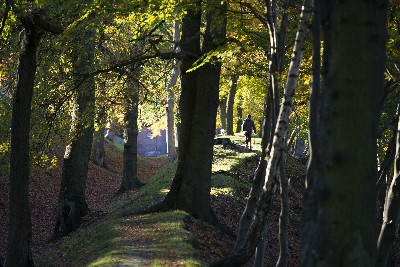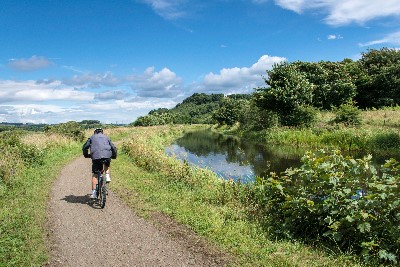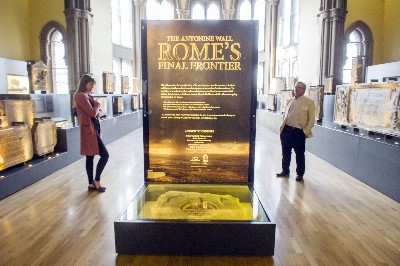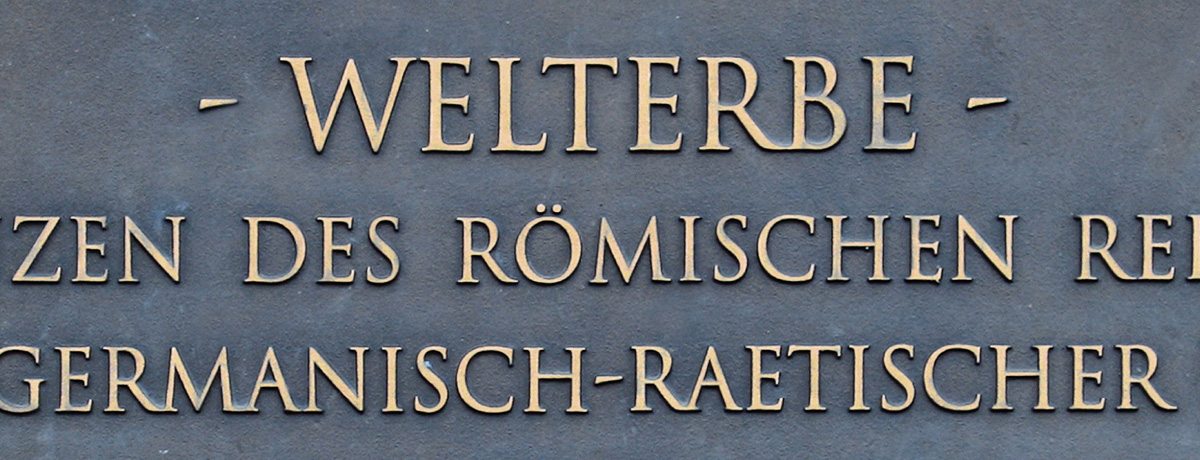ANTONINUSWALL
Der Antoninuswall, das größte und beeindruckendste Bauprojekt, das die Menschen in Schottland je gesehen hatten, erstreckte sich quer durch das Land, vom Firth of Clyde bis zum Firth of Forth. Er wurde um 142 n. Chr. von den Römern errichtet, um die nordwestliche Grenze ihres Reiches zu markieren und war zugleich ein mächtiges Symbol ihrer Macht und Autorität. Ohne Rücksicht auf frühere Siedlungen der Eingeborenen verlief die Trasse durch bereits bestehende Stammesgrenzen und nutzte die landschaftlichen Gegebenheiten wie Bergrücken, Kämme und Steilhänge, um eine unüberwindbare und gut sichtbare Barriere zu schaffen.
Im Gegensatz zu seinem steinernen südlichen Nachbarn, dem Hadrianswall, bestand die Mauer des Antoninuswalls größtenteils aus aufgeschichteten torfhaltigen Rasensoden und erreichte eine Höhe von 3 m. Zu den Verteidigungsanlagen gehörte nicht nur eine Mauer, sondern auch ein riesiger, stellenweise fast 5 m tiefer Graben, der nördlich des Walls verlief, sowie ein äußerer Damm, der aus der aus dem Graben geworfenen Erde errichtet wurde. Siebzehn Kastelle und zusätzliche Kleinkastelle beherbergten die 6.000-7.000 Mann, die entlang der Mauer stationiert waren. Ein weiteres wichtiges Element war die südlich der Mauer angelegte Militärstraße, die entlang ihres Verlaufs schnelle Truppenbewegungen sowie den raschen Transport von Nachschub, Befehlen und Nachrichten ermöglichte.
Der von den Römern errichtete, für etwa 20 Jahre besetzte und dann wieder verlassene Wall hat in der schottischen Landschaft seine Spuren hinterlassen. Seit 2008 gehört der Antoninuswall neben dem Hadrianswall und dem Obergermanisch-Raetischen Limes zum seriellen Weltkulturerbe „Grenzen des Römischen Reiches“/“Frontiers of the Roman Empire“.
Heute können die Spuren von Wällen, steilen Gräben sowie die Überreste von Kastellen und Badehäusern erkundet werden und es lässt sich erahnen, wie das Leben der Römer an dieser abgelegenen Grenze ausgesehen haben mag. Der Antoninuswall bietet einem breiten Publikum ein attraktives Ziel , ein Besuch lohnt sich sowohl - für Römerliebhaber als auch passionierte Wanderer, Radfahrer, Familien und Tagesausflügler. Es lassen sich nicht nur römische Hinterlassenschaften besichtigen, man kann auch eine Bootsfahrt auf dem Falkirk Wheel unternehmen oder an einem der vielen Punkte entlang des Walls dem John Muir Way folgen. Wie wäre es mit einem Besuch in einem der vielen Museen, einem Spielplatz mit römischen Themen oder der Einkehr an einem der vielen malerischen Orte entlang der Strecke?
Weitere Informationen finden Sie unter: www.antoninewall.org

© Crown Copyright HES.

© Crown Copyright HES.

© Donald MacLeod.



